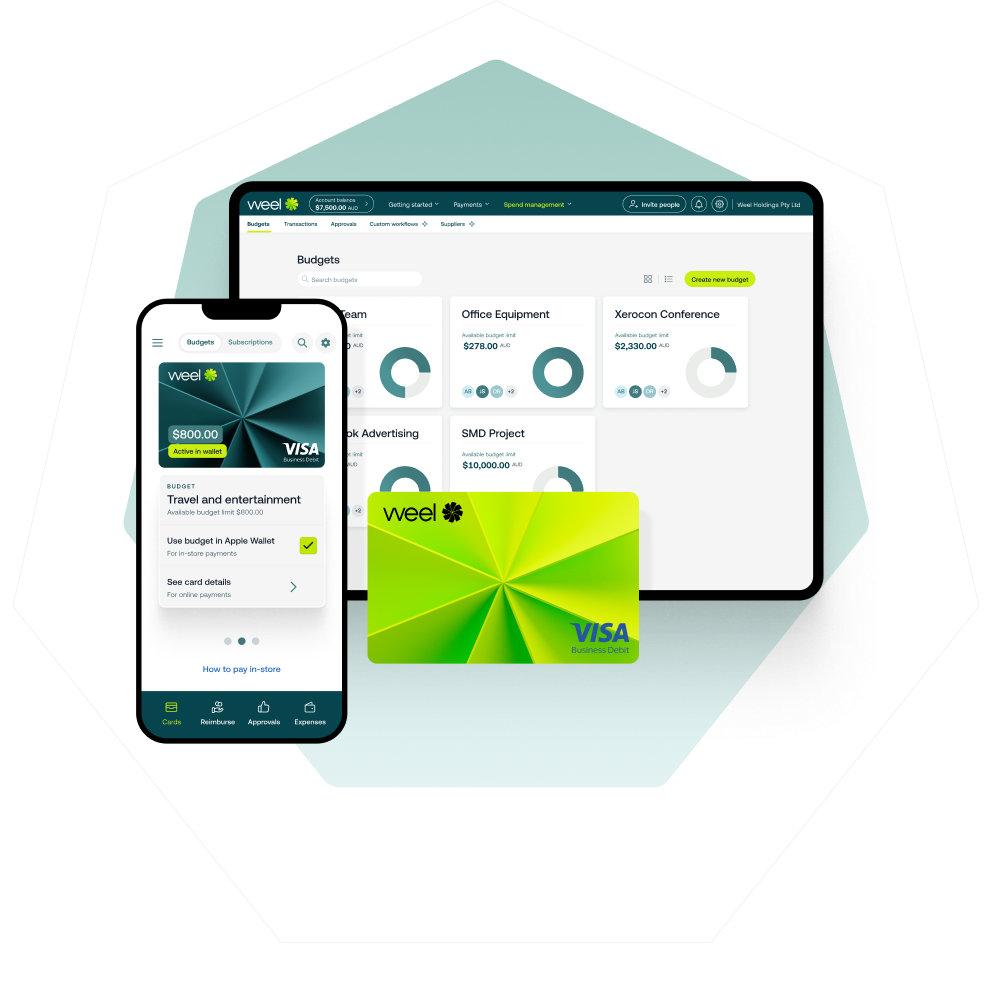If you're a mid-sized to enterprise-level business, the choice isn't just about operational efficiency; it's about control, visibility, cost management, and long-term scalability. This guide breaks down the pros and cons of both models and introduces a smarter third option for finance teams looking to modernise: in-house automation using software like Weel.
What is accounts payable outsourcing?
Accounts Payable outsourcing refers to engaging a third-party provider to manage some or all of your AP function. These services typically include invoice processing, supplier invoice posting, payment scheduling, dispute resolution, vendor communication, reconciliation reporting, and compliance support.
BPOs (business process outsourcing providers) offer these services under set service-level agreements, often charging by the number of invoices processed or a fixed monthly fee. Some offer additional tools like document imaging services and analytics, but control remains firmly with the provider.
Why companies outsource
Outsourcing AP can reduce the workload on internal finance teams, making it attractive to businesses without a dedicated AP function. It provides quick access to scale, especially during periods of rapid growth, and allows finance teams to tap into external expertise in areas like compliance, vendor validation, or international payment execution.
Some businesses also see short-term cost savings by avoiding investments in automation tools or staff training.
The trade-offs
While outsourcing can lighten the load, it often limits control and visibility. You may not have real-time access to invoice approvals or payment statuses, and vendor relationship management becomes slower and less personal. Rigid SLAs can introduce delays in resolving disputes or handling urgent vendor inquiries. There are also data privacy considerations such as sharing sensitive financial information with an external party introduces risks around security breaches and compliance.
What is accounts payable automation?
.png)
Accounts Payable automation is the use of digital tools to manage your AP process internally, without outsourcing it. Instead of relying on manual steps or third-party teams, automation software allows finance teams to capture, match, approve, and pay invoices through a single platform.
A strong AP automation solution, like Weel, offers features such as OCR technology for invoice scanning, invoice-to-pay workflow automation, fraud detection, real-time reporting, integration with platforms like Xero, and digital payment execution using batch transfers, virtual cards, or ACH payments.
Why finance teams automate
Automation gives you direct control over every step of the AP process. You gain real-time visibility into cash flow, eliminate manual data entry errors, and speed up approvals with rules-based workflows. Vendor relationships stay in your hands, allowing for faster communication and resolution.
Importantly, AP automation provides a clear return on investment, not just through labour savings, but also by reducing fraud risk, enabling better cash flow planning, and improving regulatory compliance.
Unlike outsourcing, automation keeps your data in-house, with modern security and permissions controls to protect sensitive information.
Comparing outsourcing and automation
While both models aim to reduce friction in AP, they offer different outcomes.
In terms of cost, outsourcing often comes with ongoing service fees and additional charges for scope changes. Automation uses a subscription-based SaaS pricing model, which tends to be lower and more predictable.
Control and visibility are stronger with automation. Outsourced models can delay access to important data, while automation platforms give you real-time dashboards, reconciliation reports, and live approval tracking.
Security is another differentiator. With outsourcing, sensitive financial data is shared externally. With automation, data is encrypted and managed internally.
When it comes to integration, most outsourcing providers offer limited connectivity with your existing systems. Automation tools like Weel integrate seamlessly with accounting platforms such as Xero and MYOB.
Finally, flexibility is worth noting. Outsourcing is bound by SLAs and contracts, which can be slow to change. AP automation is scalable by design, whether you're adding users, vendors, or approval workflows.
Addressing common AP challenges
Let’s look at how each model addresses key challenges finance teams face:
- Late payments: Outsourcing may introduce delays if providers work across time zones or have fixed approval schedules. Automation ensures timely payments with built-in reminders and batch scheduling.
- Invoice approval bottlenecks: External teams often follow fixed processes. With automation, you can customise approval flows and reduce turnaround times significantly.
- Fraud detection: Outsourcing puts this responsibility on the provider. Automation tools include native fraud controls, user permissions, and alerts that help detect suspicious activity in real time.
- Cash flow visibility: Outsourcing can create reporting lags. Automation offers real-time cash flow insights, helping you plan and report with confidence.
- Vendor inquiries: In outsourced setups, communication is mediated. Automation allows your team to respond directly, resolving issues faster and preserving trust with vendors.
When to consider AP outsourcing

Outsourcing may suit businesses with:
- No internal finance or AP team
- Heavy international vendor exposure with limited local support
- Resistance to technology adoption or change
- A short-term need to offload transactional tasks during high-growth periods
However, it’s often a short-term fix rather than a long-term solution.
When automation is the smarter option
For most mid-sized and growing businesses, AP automation is the better fit. It’s particularly useful when:
- Your team is spending too much time on manual approvals or chasing receipts
- You need better visibility into cash flow and AP performance
- You want to protect vendor relationships by keeping communication in-house
- Integration with existing systems is a must
- You’re preparing for scale and want flexibility built into your workflow
In short: if your AP process is a bottleneck, automation removes the friction, without outsourcing control.
Before you decide: questions to ask

To make the right decision, start by mapping your current AP process from invoice capture through to payment. Identify where delays, errors, or inefficiencies occur. Then ask:
- What are your compliance and data security requirements?
- What visibility do you need into AP workflows and spend?
- Do you have the internal resources to manage a tool, or would a partner add value?
- What’s the total cost of ownership - staffing, tools, service fees, and risks?
- Is your current process limiting your ability to scale?
The answers often point toward automation.
Why finance leaders are choosing Weel
Weel offers a modern AP automation platform built for Australian finance teams. With Weel, you can eliminate manual bottlenecks and reduce approval delays, without giving up control.
Key benefits include:
- Local support and a platform built for compliance
- Batch EFT payments and real-time spend control
- Instant invoice approval tracking
- Seamless Xero integration for fast reconciliation
- Secure, cloud-based infrastructure with built-in fraud detection
- Digital payments using virtual cards with potential for rebates
- Real-time cash flow insights to improve planning and forecasting
If your business is ready to automate, Weel helps you get there - quickly, securely, and without the overhead of outsourcing.
Explore Weel’s Accounts Payable Automation
Book a Demo
Take Our Product Tour
View Weel Pricing











.png)


